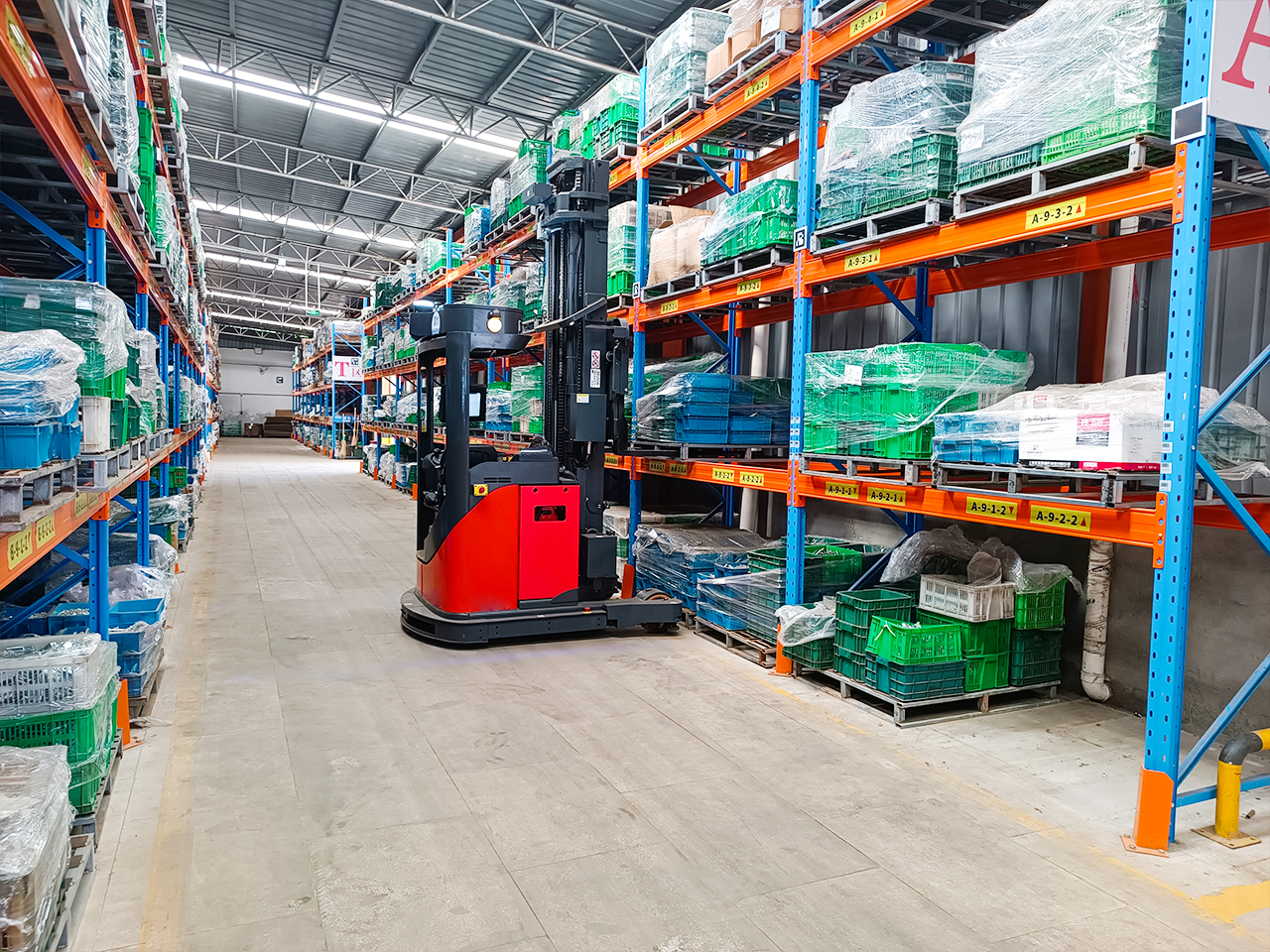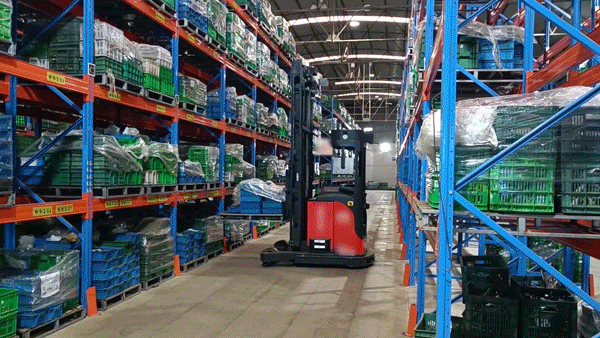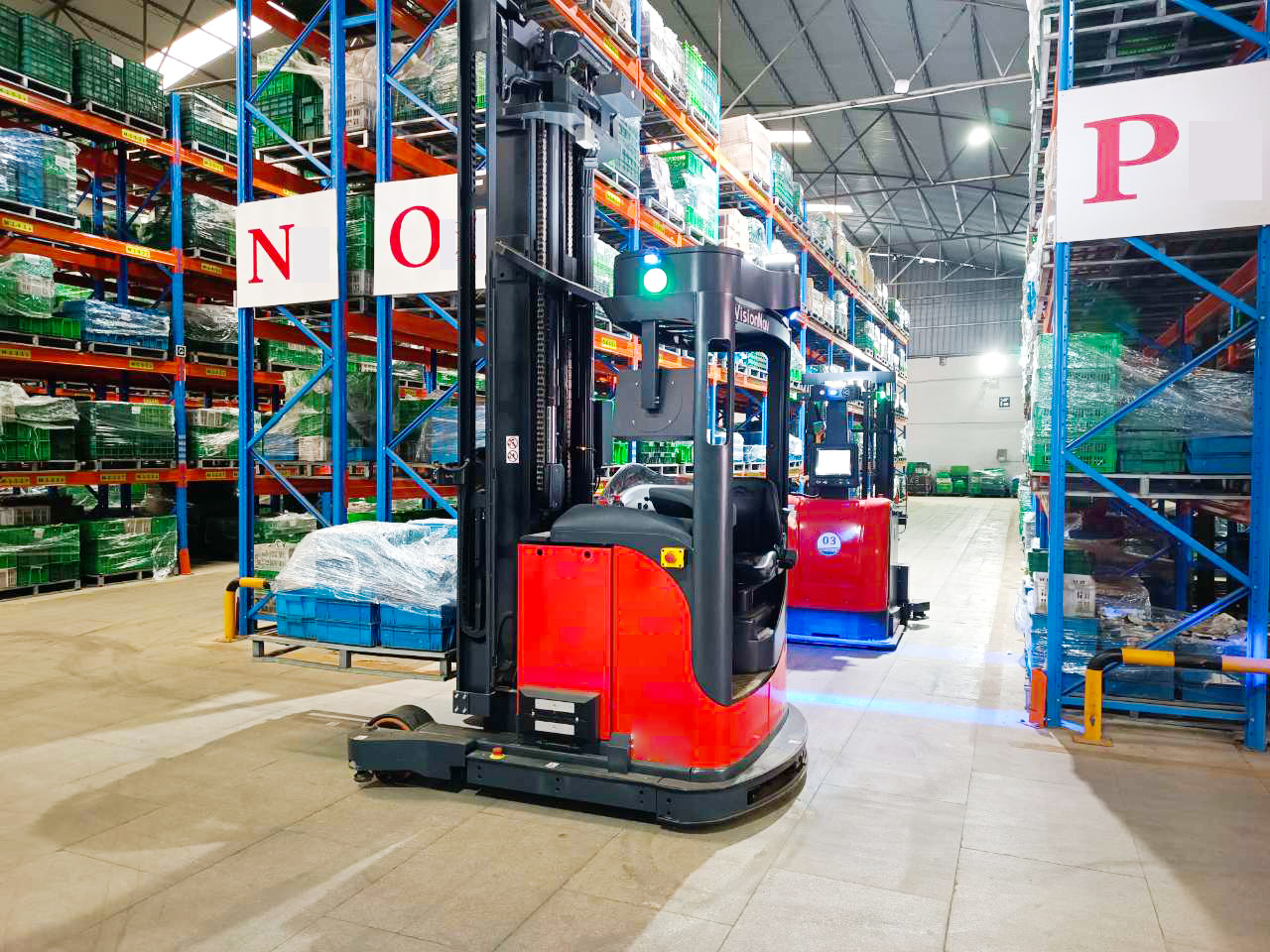Global manufacturing automation has entered a new era, with intelligent solutions becoming the primary trend. As a crucial part of this movement, logistics automation is increasingly essential. This case study focuses on a leading electrical equipment manufacturing company and explores how automation can help reduce costs and boost efficiency.
Project Background
This company is a major player in the electrical equipment industry, with numerous subsidiaries under its umbrella. To improve warehouse operations, the company implemented VisionNav Robotics' logistics automation solutions, bringing about a revolutionary transformation in warehouse management.
The warehouse is divided into three main areas: a storage area with shelving, an inbound receiving area, and an outbound sorting area. The storage area features shelving units with a maximum height of 6.5 meters. The project deployed two VisionNav VNR16 Autonomous Reach Trucks, three VisionNav VNP15 Autonomous Pallet Stackers, and an RCS (Robot Control System) to automate the management of material storage and retrieval, as well as inbound and outbound logistics.

Project Deployment
VNR16 Autonomous Reach Trucks: These trucks are designed for high-rack storage in complex environments. With a maximum fork lift height of 7,255 mm and a load capacity of up to 1,600 kg, they are equipped with 360° laser obstacle detection and mechanical protection, ensuring the safety of people, vehicles, and goods. In this project, the two VNR16 trucks, managed by the RCS, handle material storage and retrieval for the 2nd to 5th levels of the shelving units.

VNP15 Autonomous Pallet Stackers: Known for their efficiency and flexibility, these stackers are ideal for various tasks such as flat transport, multi-layer stacking, and high-rack storage. In this project, three VNP15 stackers, also managed by the RCS, handle material storage and retrieval for the 1st to 3rd levels of the shelving units.

Project Workflow
Automated Inbound Process: When materials arrive at the inbound receiving area, the location and material information are manually linked, and the Warehouse Management System (WMS) sends the inbound task to the RCS. The autonomous forklifts then transport the materials to the designated storage area , updating the system with real-time logistics and storage location information.
Automated Outbound Process: The WMS sends the outbound task to the RCS, which dispatches the autonomous forklifts to retrieve materials from storage and deliver them to the sorting area. After sorting, the remaining materials are returned to storage if needed, with the RCS updating the system to reflect material movement and storage status.

Project Value
By implementing VisionNav Robotics' internal logistics automation solutions, the company achieved smarter warehouse management, enhanced operational efficiency, and significantly reduced operational costs. This allowed them to focus more on product development and market expansion, strengthening their competitive edge in the global market.